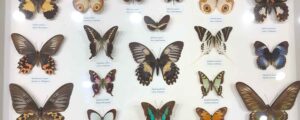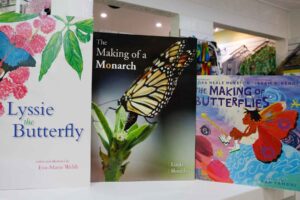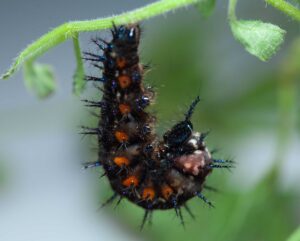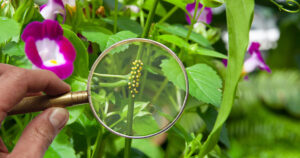glasswing | butterfly | camouflage | survival traits | insect photography
If you were an insect being hunted by a notorious predator, what superpower would you choose? In the butterfly world flaunting bright reds, oranges and yellows communicates risk of toxicity and certain death to predators. In other cases, some butterflies have chosen precisely the opposite approach as their superpower – being invisible. By avoiding overt displays of colour and camouflaging into surroundings with ‘glasswings’, they can hardly be targeted. It’s a case of ‘now you see me, now you don’t’.

A photographer, who is lucky enough to fleetingly spot a glasswing butterfly, might face similar challenges. How to capture a decent photo of an almost invisible butterfly you ask? We caught up with nature photographer, biologist and former Australian Butterfly Sanctuary staff member, Helberth Peixoto, to find out some of his tips.

Tip number #1: Some places in Central and South America are considered hotspots for butterflies. Where do you recommend seeing glasswing butterflies in the wild?
Helberth “Although it is possible to find a variety of butterflies including glasswings any time of year, the best time varies according to the region you visit. For example, in the Ecuadorian Choco forests, on the western slopes of the Andes, the best time is from April to July. In the Amazon, the drier season is the best time which is roughly between May and October. In the moist Atlantic Forest alongside the coast of Brazil, it’s pretty good any time of the year. But, in the inland seasonal Atlantic Forest, the butterflies are more abundant from December to April. In general, glasswing butterflies are forest dwellers and like to fly low among shaded vegetation close to the ground. Anywhere you decide to visit, I highly recommend going with a knowledgeable guide which will deliver a much better experience”.
Tip number #2: According to a study in Nature Communications, the engineering or nanostructures in glasswing butterfly wings are completely random which allows no reflection of light. Do you have any tips on photograph composition or lighting to highlight the subject?
Helberth “To photograph glasswing butterflies is a bit of a challenge, firstly because they are usually either in the shade or worse – moving around in a mix of shaded and sunlit patches in the forest understory. If you are out on a sunny day, it is a good idea to avoid the midday sun as the light can be too intense. Sometimes an overcast sky is better. Secondly and even more challenging, is getting those nearly invisible little critters in focus … we can’t count on their wings to help with that! A good tip is to either use manual focus or, when using automatic focus, try to focus on a branch or leaf where the butterfly is sitting. Then, set a lower lens aperture to make sure you get the butterfly in focus too. I don’t like to use flash when photographing glasswing’s, or any diurnal animals in their habitats, because it usually changes some colours and might make the image look a bit artificial”

Tip number #3: On average glasswing butterflies can fly up to 13 km/per hour, which is moderate speed for butterflies. Can you share any tips on your camera settings or photography equipment when capturing butterflies in flight?
Helberth “The best chance to get photos of butterflies in flight are when they are foraging on flowers. So, the tip is to watch what flowers they are visiting, with what frequency, and how long they stay sipping nectar. Then you can set up your shot, making a plan based on light, position, background etc. It is tricky but possible to get a reasonable photo using a point-and-shoot camera or even a phone camera, if you have decent light conditions. The ideal situation however, is to use a more advanced camera that is equipped with either a macro lens (e.g 100 mm) or a telephoto lens up to 400 mm. The advantage of using a telephoto lens is that you don’t need to get too close to the butterfly to capture an image, which is what usually causes them to fly away … especially glasswing’s”


Being mostly invisible is a very helpful superpower when trying to escape the gaze of predators. And as we’ve just learned, this superpower can make things a little tricky for photographers too. Visiting Central and South America to photograph glasswing butterflies certainly is a bucket list trip for any butterfly enthusiast. Some prior planning around camera settings and use of specialised lenses makes for better image quality. But, it’s also good to know that fairly decent images can be captured with compact-type cameras. Helberth’s photographs of glasswing butterflies celebrate natural beauty, uniqueness, and perhaps counterintuitively … colour. Among others, these qualities are what remind us of nature’s complexities and our role in conservation efforts.
References
Siddique, R., Gomard, G. & Hölscher, H. The role of random nanostructures for the omnidirectional anti-reflection properties of the glasswing butterfly. Nat Commun 6, 6909 (2015). https://doi.org/10.1038/ncomms7909






